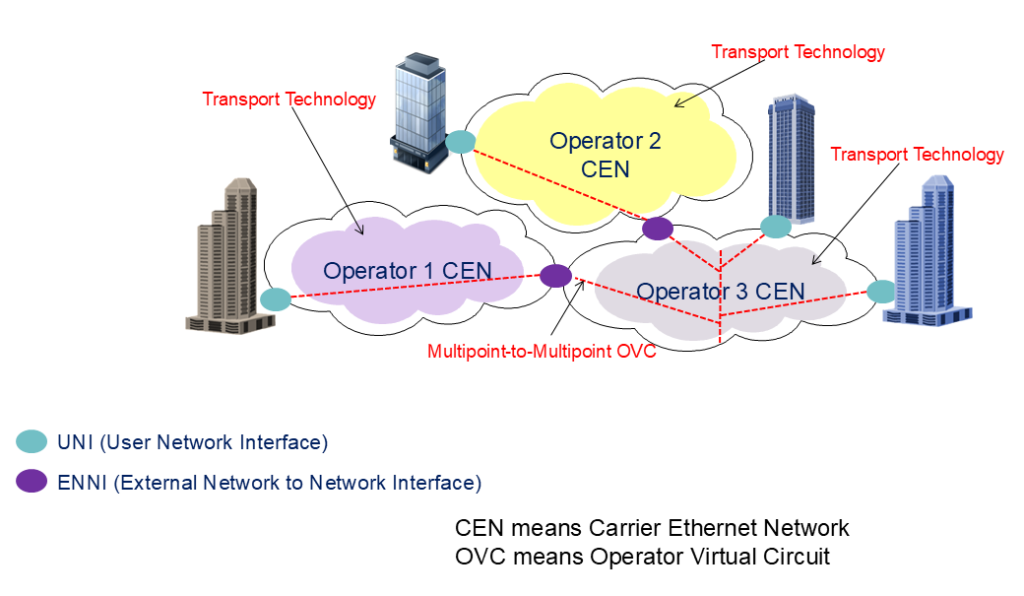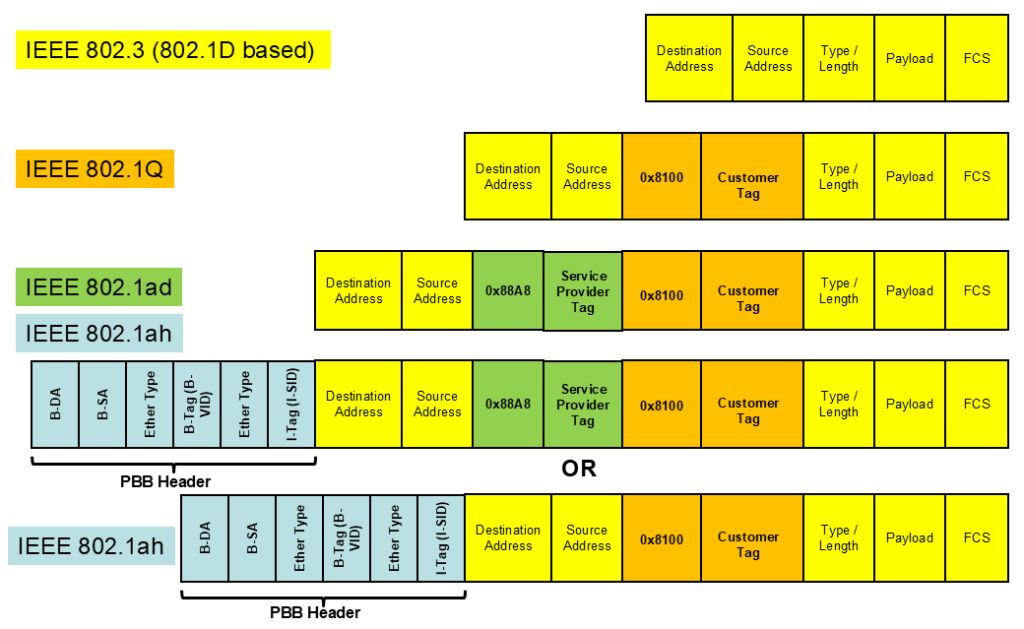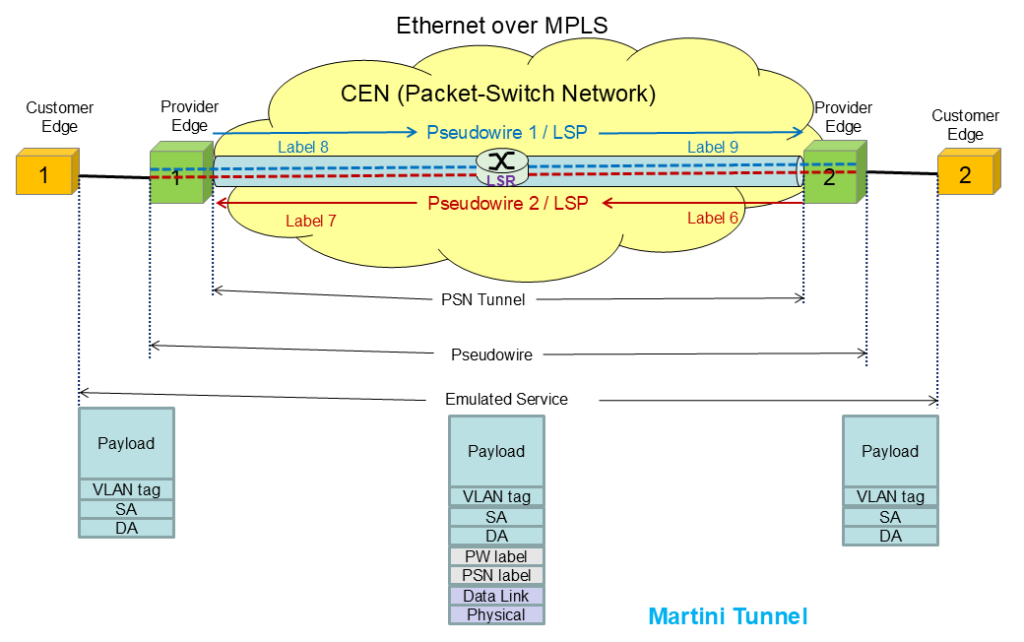
In September last year, I delivered a brief presentation on ‘Carrier Ethernet OAM’ during APNIC 56. Later, in October 2023, I followed up with a blog post on the same topic for the APNIC Blog. This time, I am exploring another aspect of Carrier Ethernet, which is about its variety of offered ‘transport technologies’ with a brief comparison summary.
Let me first briefly describe what Carrier Ethernet is for those who are not familiar with it before starting my actual topic.
Carrier Ethernet refers to the use of Ethernet technology outside of Local Area Networks (LANs), specifically for long-haul, metropolitan, and Wide Area Network (WAN) applications. It is often referred to in the industry as Metro Ethernet, Layer 2 VPNs, Layer 2 WAN circuits, Ethernet WAN, or simply Carrier Ethernet. The technology is standardized by the Metro Ethernet Forum (MEF), which establishes the technical specifications and implementation agreements for its use.
What are transport technologies?
Transport technologies are essential in Carrier Ethernet networks for delivering Ethernet services. Carrier Ethernet operates as an overlay and can use various transport technologies, such as Multiprotocol Label Switching (MPLS), optical transmission, or Ethernet, for the underlying infrastructure.
Each technology offers different benefits and limitations, depending on the operator’s resources, capacity, expertise, and implementation choices. Therefore, selecting a transport technology is an internal decision for each network operator. However, since multiple operators might be involved in providing end-to-end Ethernet services, service providers should assess the transport technologies used by all operators before finalizing a Service Level Agreement (SLA) with customers.

Categories of transport technologies
There are three main categories of transport technologies.
- IEEE-based
- MPLS-based
- Optical transmission-based
The first category, often called Ethernet-centric, typically includes three options: Provider Bridging (802.1ad), Provider Backbone Bridging (802.1ah), and Provider Backbone Bridging with Traffic Engineering (802.1Qay). It’s important to note that standard VLAN (single-tag) technology (802.1Q) cannot be used in this context because it doesn’t differentiate between customer and operator VLANs. Separate VLAN tags are required to prevent confusion between customer and operator frames.

The second category, commonly referred to as MPLS-centric, is widely used by operators. It includes services like Virtual Private Wire Service (VPWS) (Figure 3), Virtual Private LAN Service (VPLS), and MPLS Transport Profile (MPLS-TP). Since many operators offering Carrier Ethernet services already have MPLS networks in place, customers in South Asia often encounter this option as the primary choice for their Carrier Ethernet services.

The third category, known as Optical-centric, is less common due to its limitation of supporting only point-to-point services. It includes technologies like Synchronous Digital Hierarchy (SDH) {or Synchronous Optical Network (SONET) which is the North American version of SDH}, Dense Wavelength Division Multiplexing (DWDM), Coarse Wavelength Division Multiplexing (CWDM), and Optical Transport Network (OTN, ITU-T G.709). While optical transport is widely deployed in Asia for transmission purposes, it does not suit the need for multipoint connectivity, making it less ideal for broader Carrier Ethernet services.

A common distinction between the three categories is that the first two are ‘packet aware’ technologies whereas the third one is ‘packet unaware’ by nature.
Comparison points
An obvious question arises: On what basis should an operator compare these transport technologies? Here are some key factors to consider.
Class of Service (CoS) support: In practice, some technologies support CoS while others don’t. Technologies that don’t support CoS treat all service frames identically, providing the same Quality of Service (QoS) to all service frames, which is undesirable while managing modern traffic.
Bandwidth: Technologies differ in terms of offered Fractional Bandwidth (FBW) capability and their ability to support service bandwidths of arbitrary size (granularity). Granularity can’t be ignored when dealing with Ethernet traffic and therefore it is a limitation.
Protection methods: Transport technologies vary in their fault detection and protection switching methods. A common benchmark for effective protection switching or restoration is achieving it within 50ms. Some typical protection methods used with Ethernet include G.8031, G.8032, and 802.3ad.
Scalability: Some technologies provide unlimited scalability. However, scalability can be limited by various factors, such as the risk of Media Access Control (MAC) table overflow, which can occur when too many addresses are learned, overwhelming the network’s capacity to manage them.
Multipoint (MAC learning): MAC learning is essential for supporting multipoint services, such as LAN and tree-type topologies. However, some transport technologies are designed to support only point-to-point services, which is a significant limitation faced by operators when trying to offer more complex network configurations.
Summarizing the differences
In the first category, Provider Bridging (PB) and Provider Backbone Bridging (PBB) support MAC learning, which is necessary for multipoint services. In contrast, Provider Backbone Bridging with Traffic Engineering (PBB-TE) does not utilize MAC learning; instead, it relies on provisioned traffic-engineered paths to forward frames. This design limits its capability to support only point-to-point service types.
Generally, an Ethernet-centric implementation of Carrier Ethernet is simpler and less costly to operate than an MPLS-centric implementation. This category is particularly well-suited for managing Ethernet and IP traffic. However, many operators lack the expertise needed to handle Layer 2 technologies, especially for long-haul provisioning.
The second category is the most popular choice among operators. Although MPLS deployments can be costly, they are known for their high reliability and scalability. MPLS-based solutions are well-established and have been a fundamental part of most operators’ core networks for over two decades.
In the third category, these fibre optic technologies can be used independently or in combination to provide highly reliable, fixed-bandwidth circuits for the transparent transport of Ethernet service frames in point-to-point services. When a Layer 1 transport technology supports an Ethernet service, a fixed amount of network bandwidth is allocated to that service, regardless of the actual service traffic. This means that another service cannot share that bandwidth. Additionally, Layer 1 technologies are not VLAN-aware and do not support frame-based switching, CoS, or multicast capabilities.
As we have seen, selecting a transport technology can lead to various outcomes and is ultimately an internal decision for each network operator. I hope you benefitted from reading this blog post. Please keep learning and broadening your knowledge using the resources and training offered by APNIC.
Azhar Khuwaja is a Telecom/IT Trainer with over 20 years of industry and training experience.
The views expressed by the authors of this blog are their own and do not necessarily reflect the views of APNIC. Please note a Code of Conduct applies to this blog.
